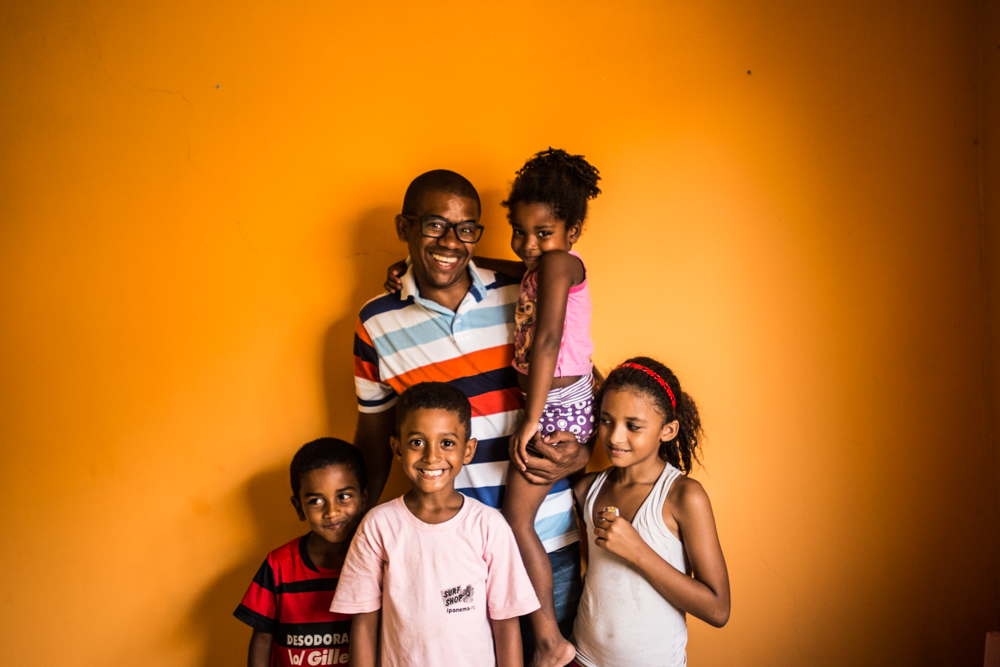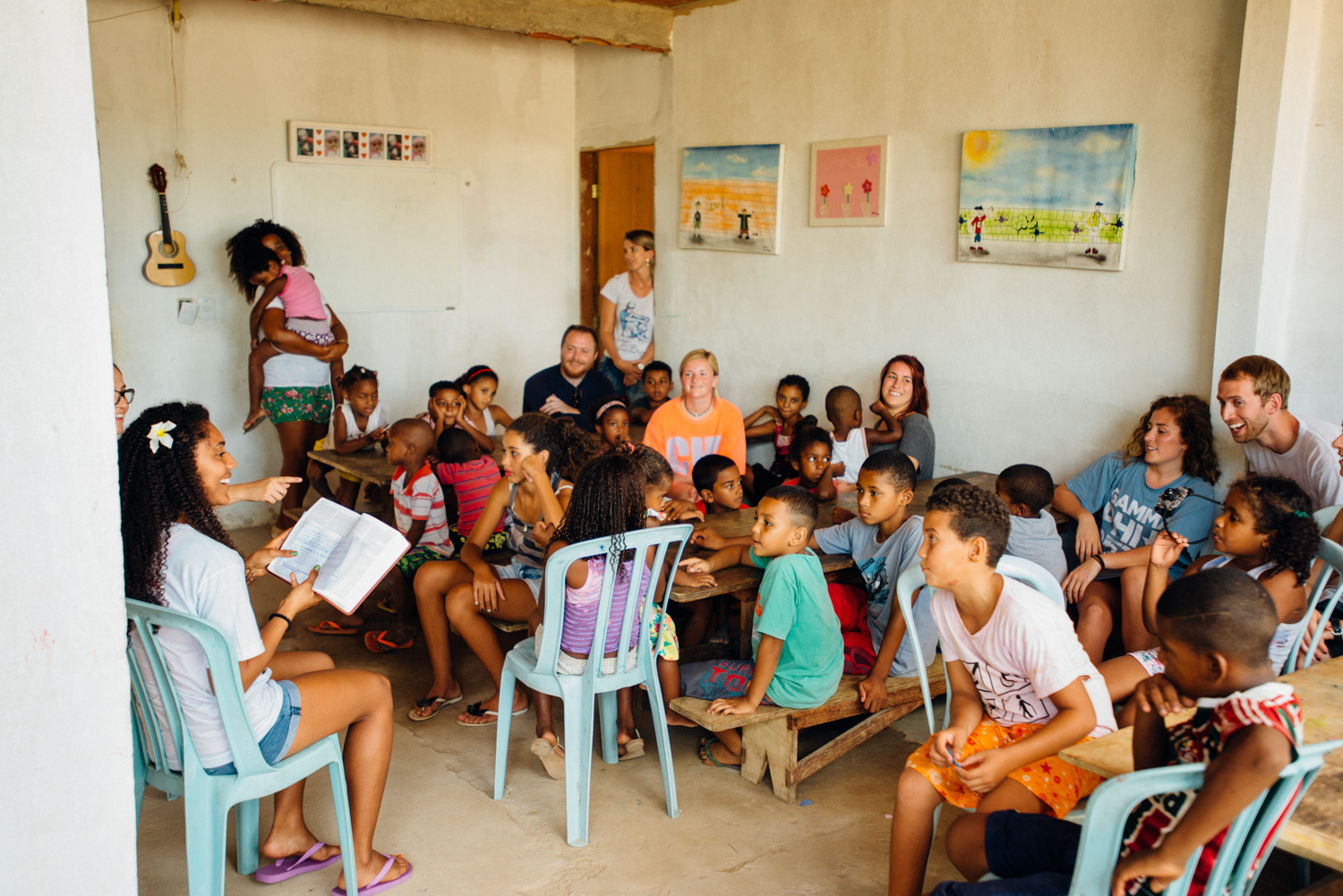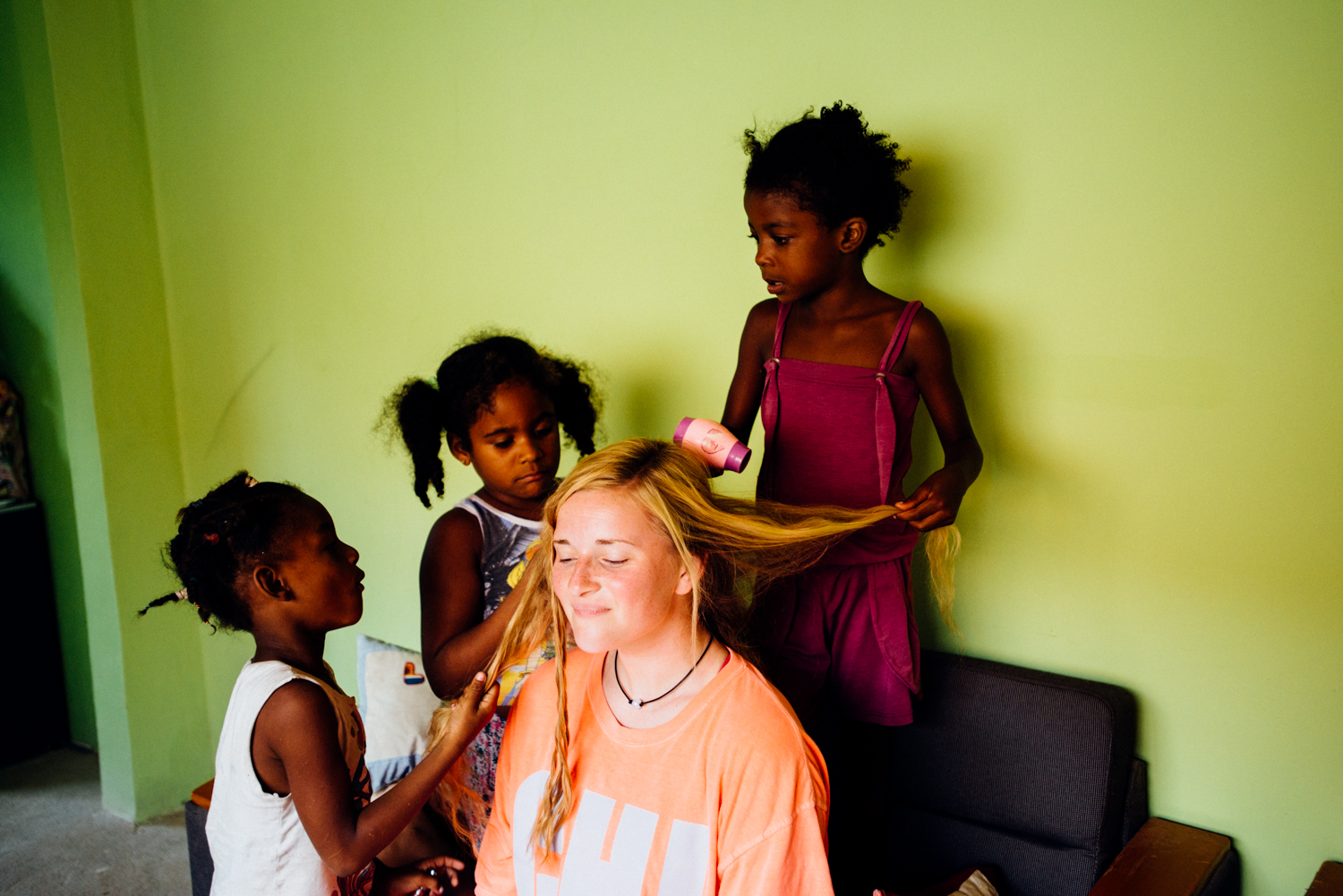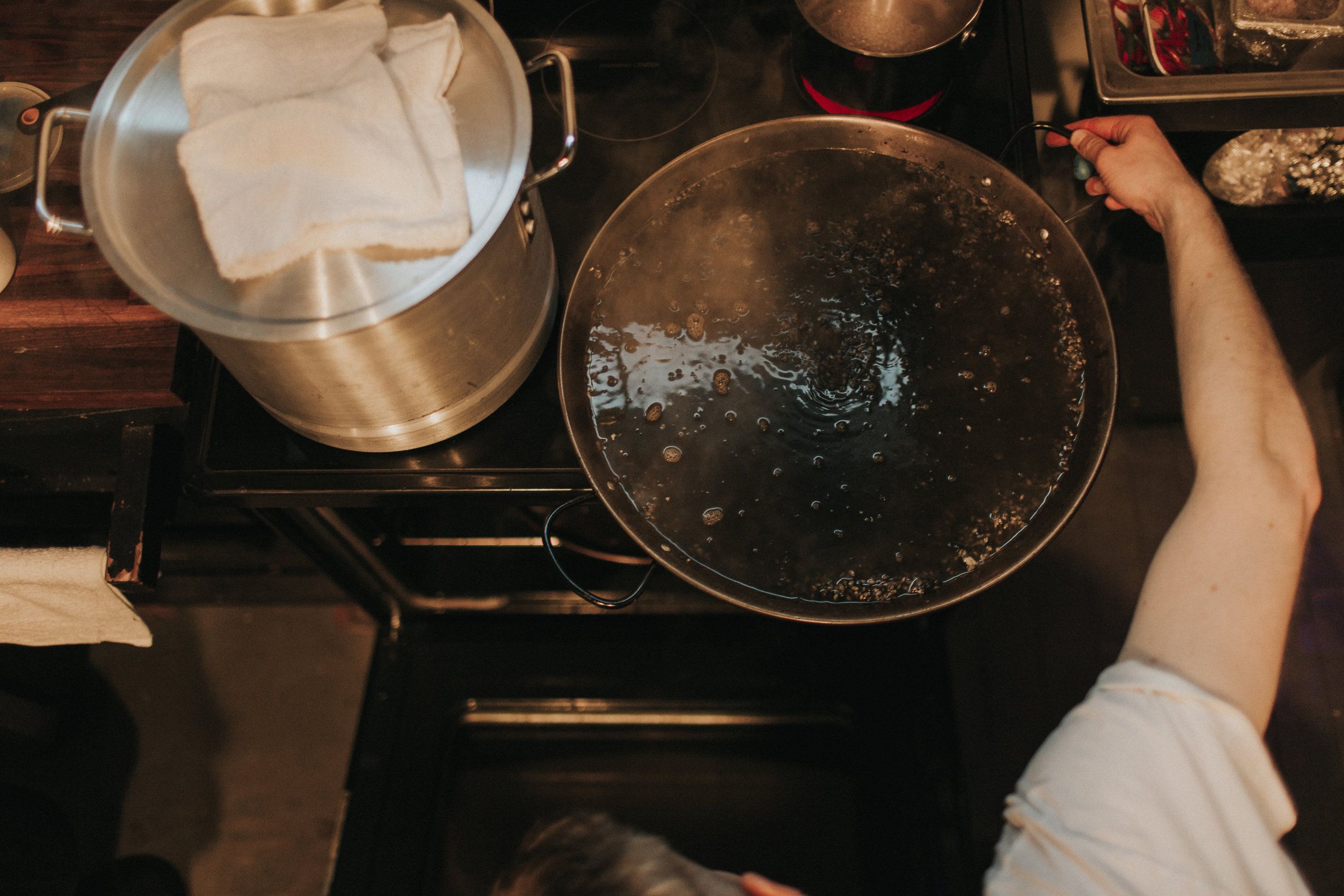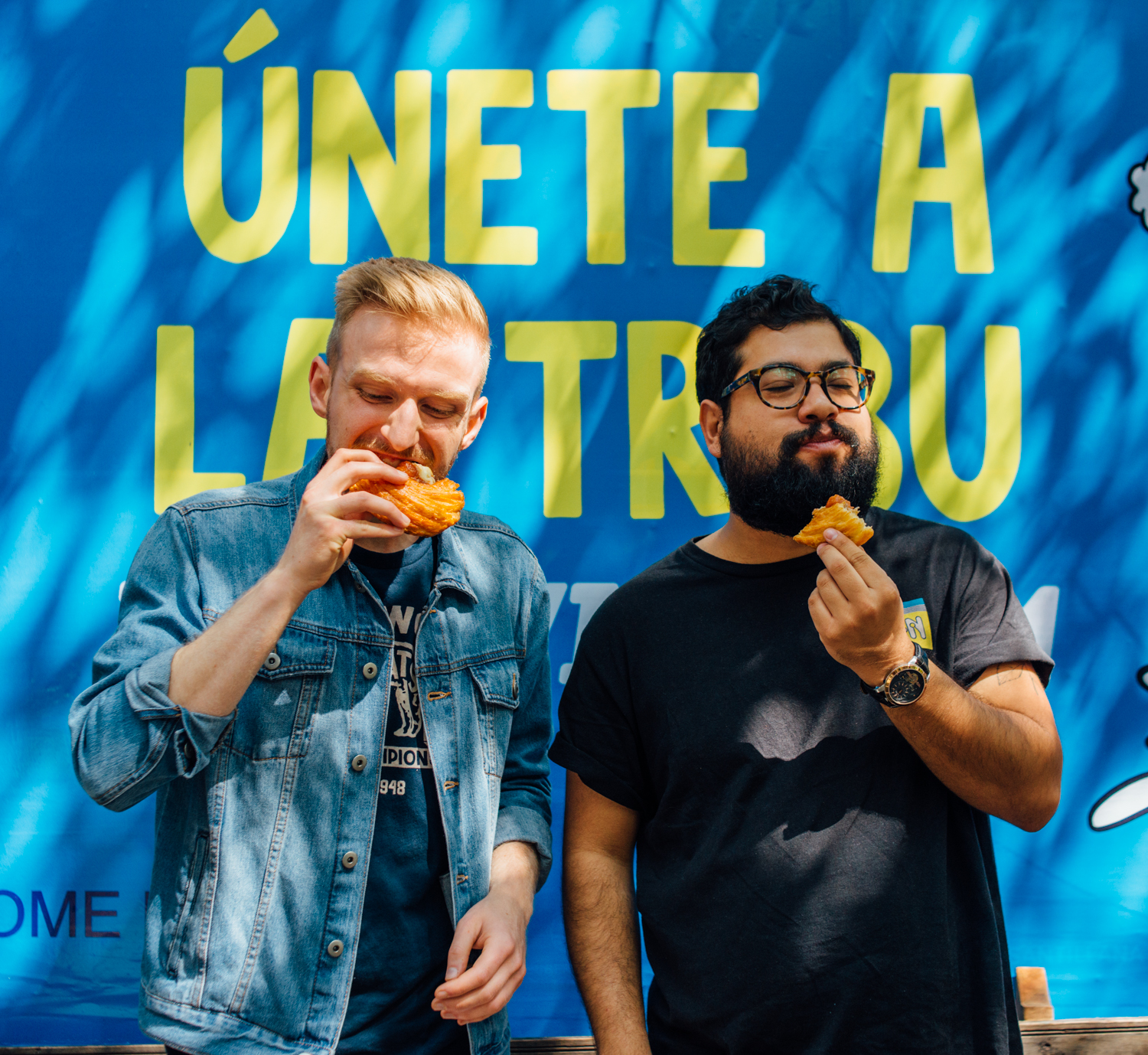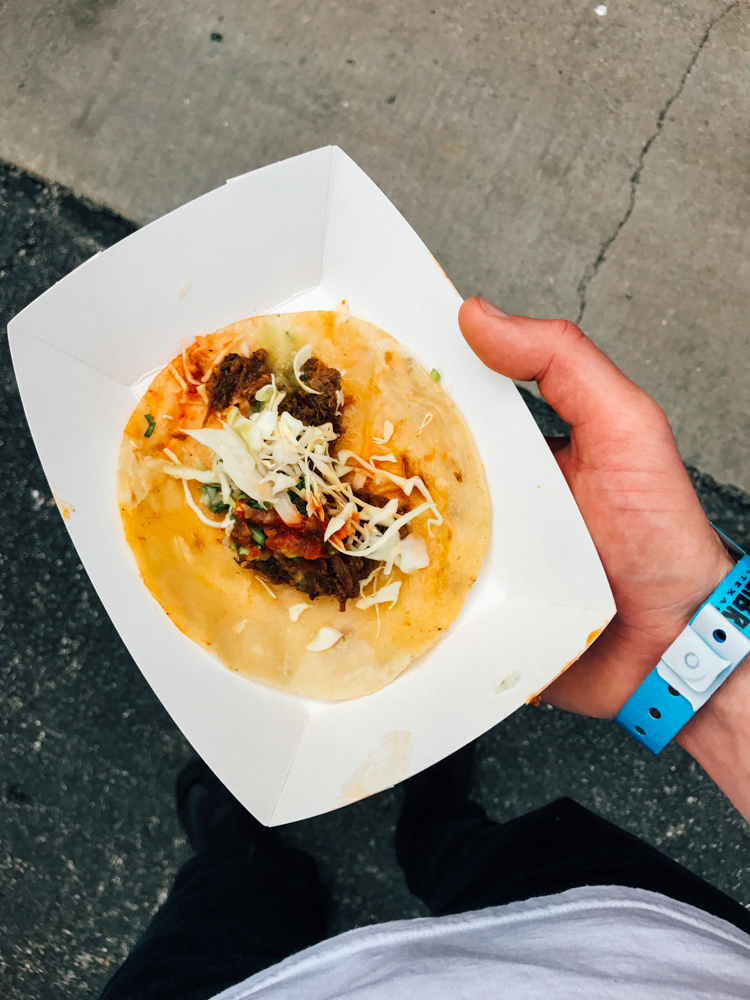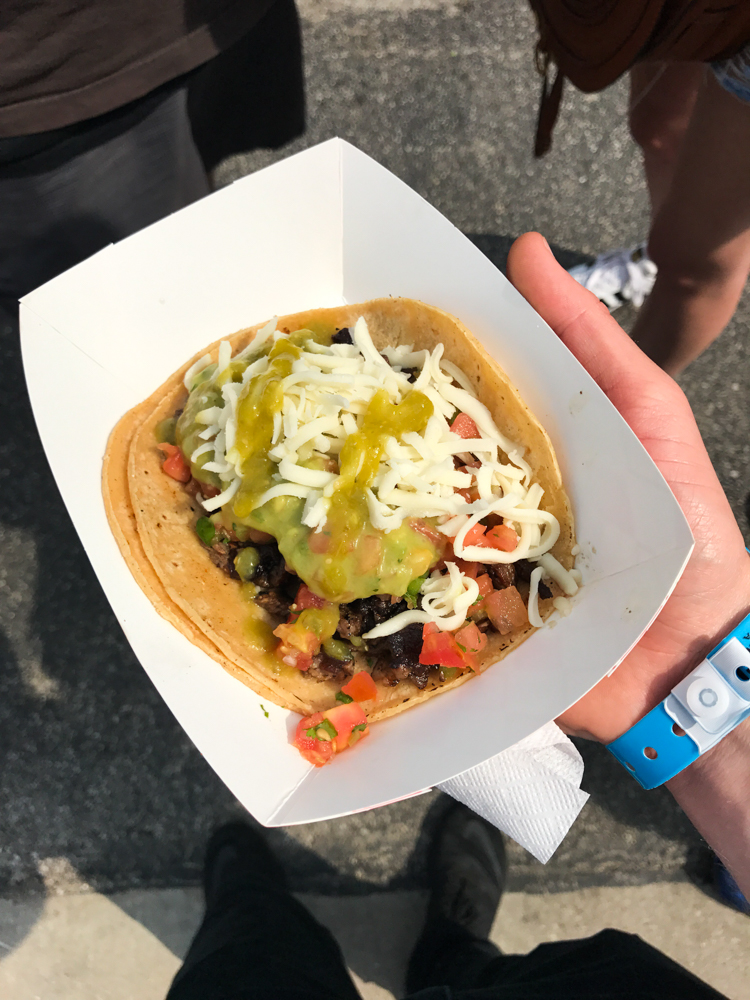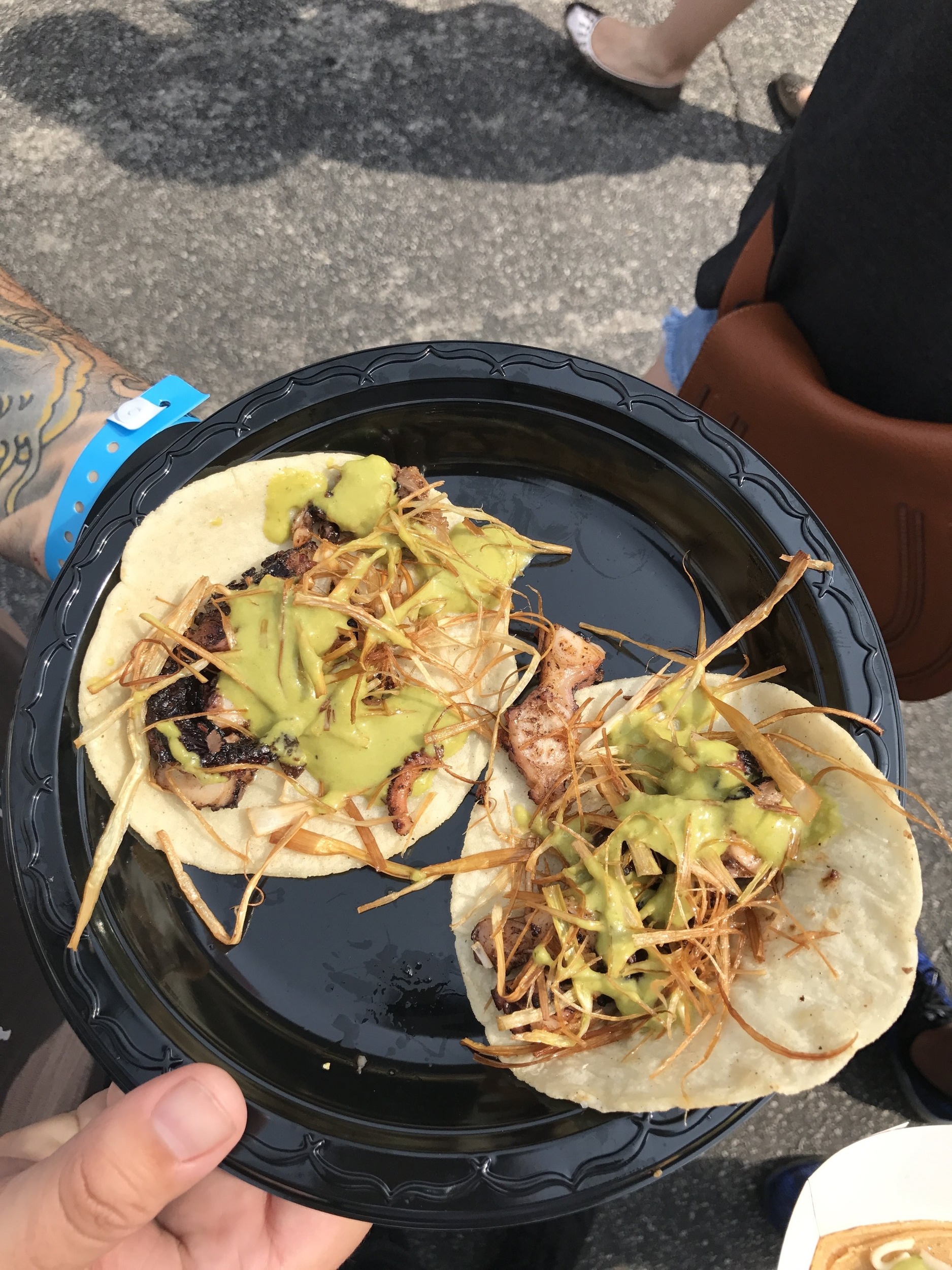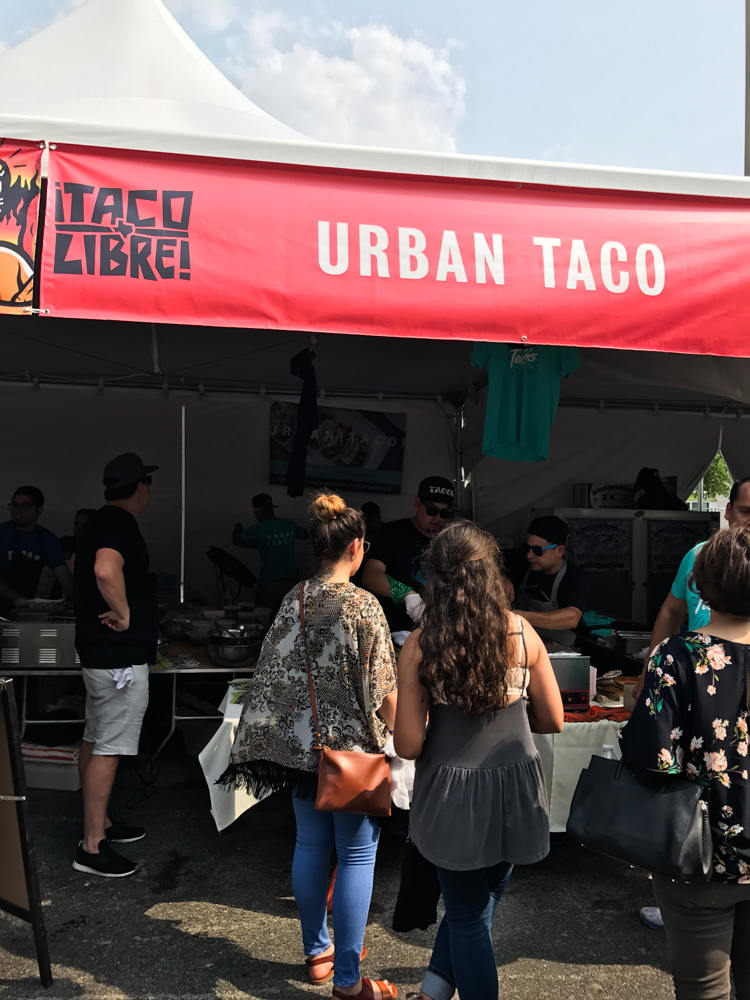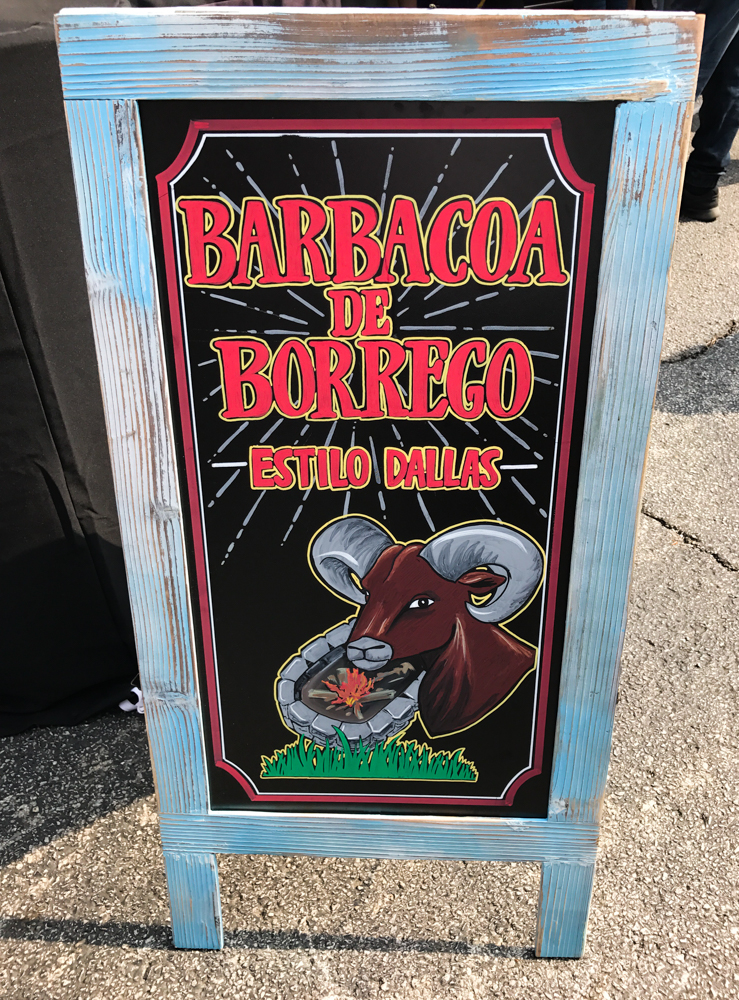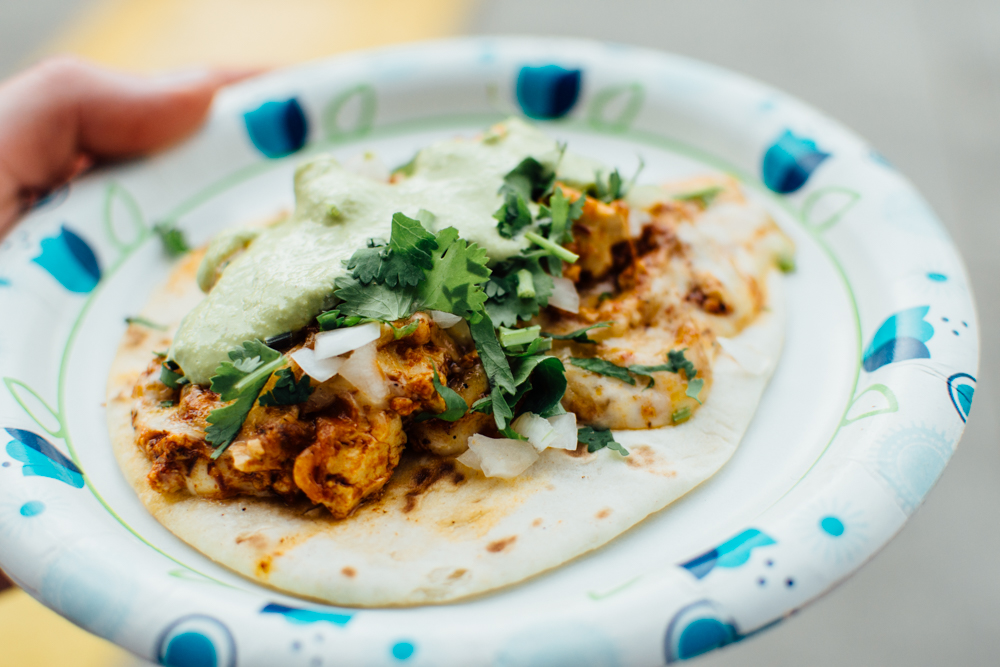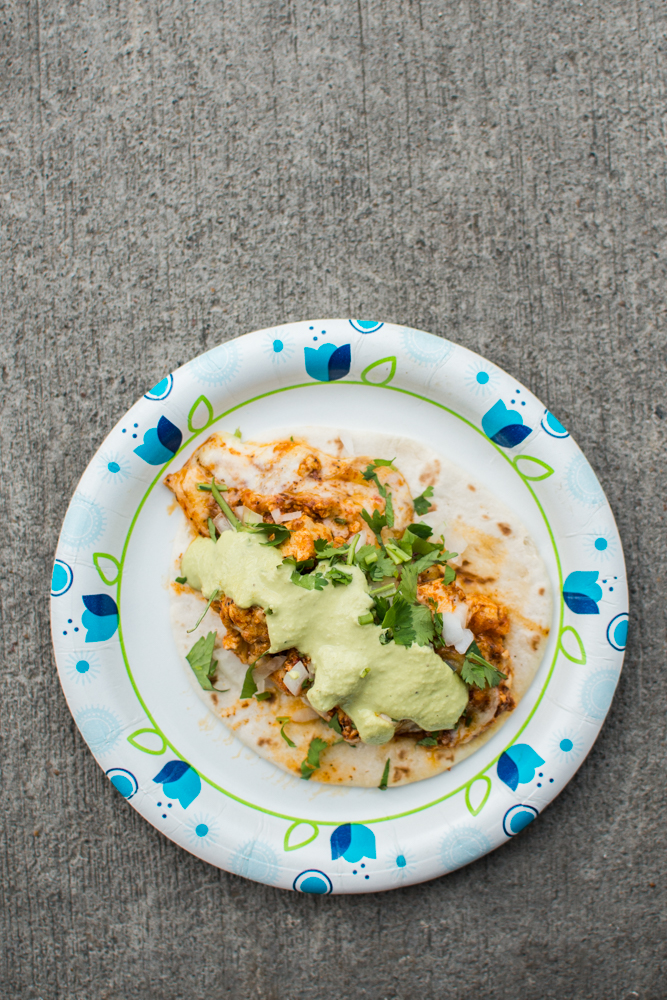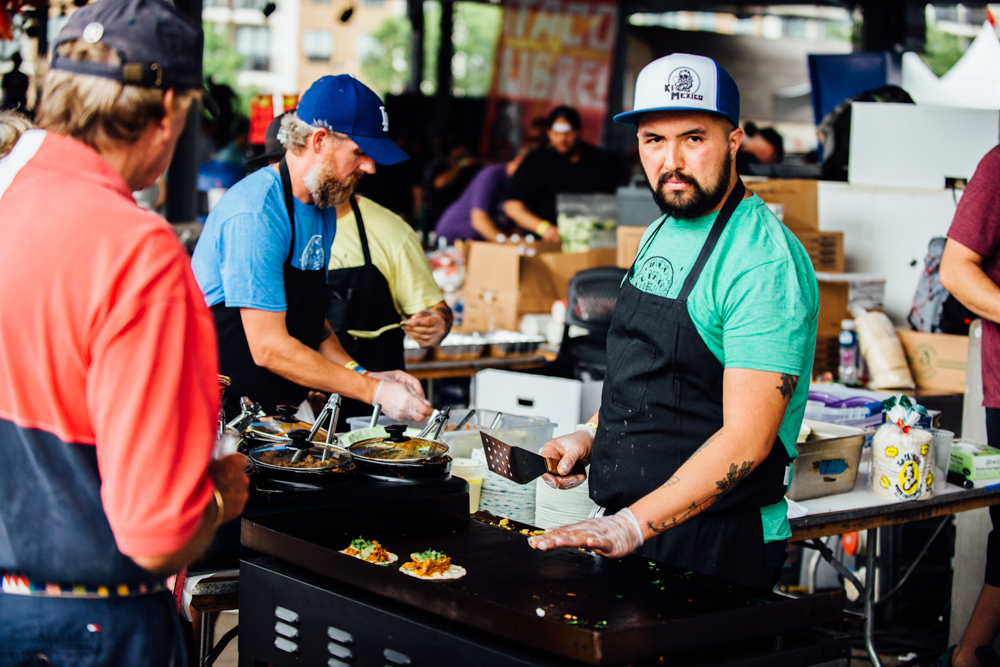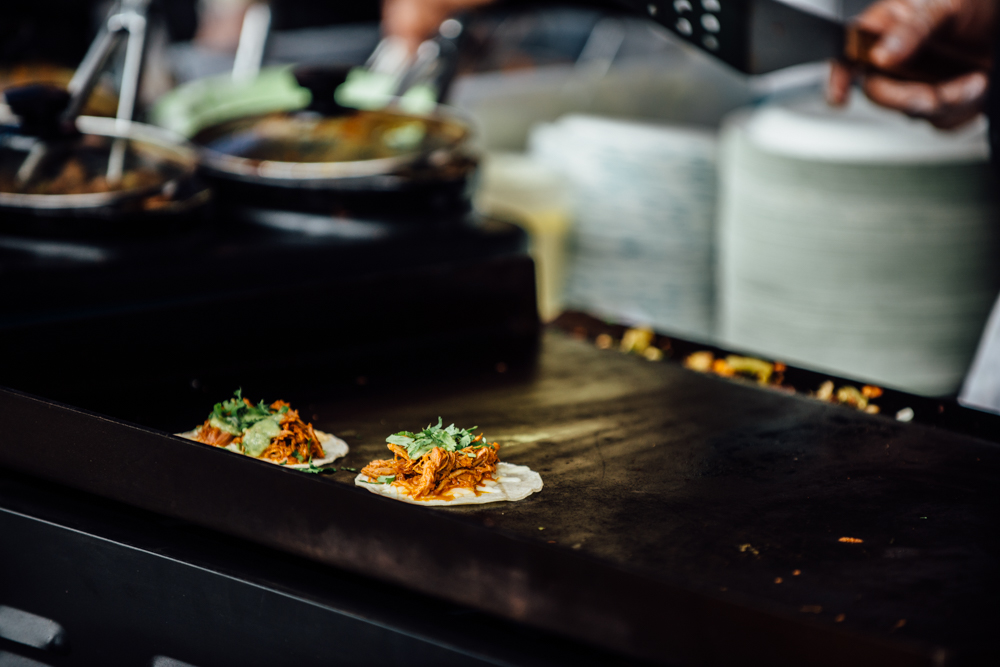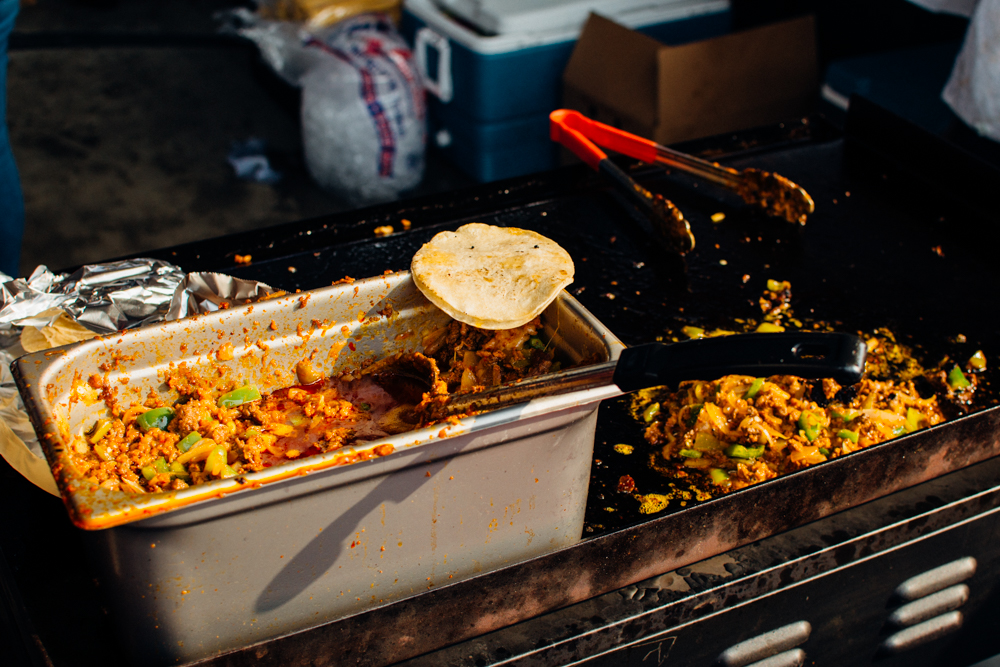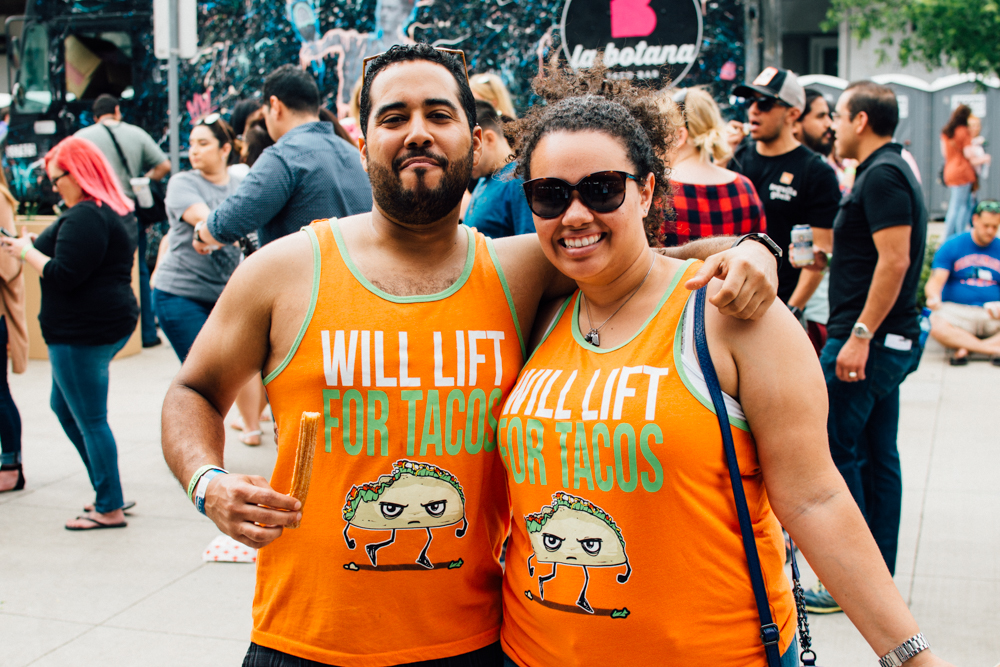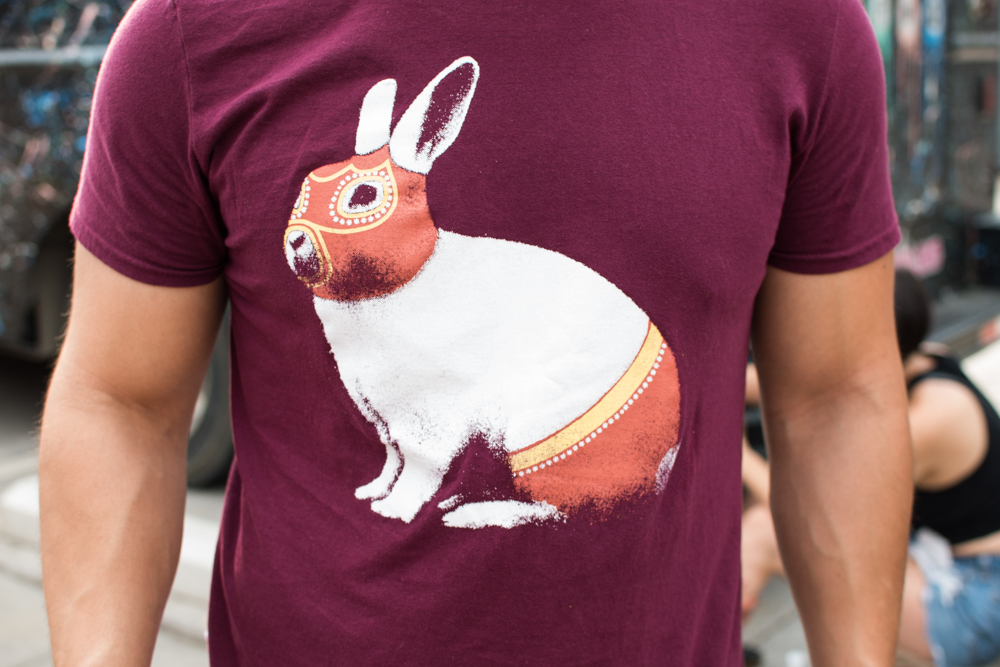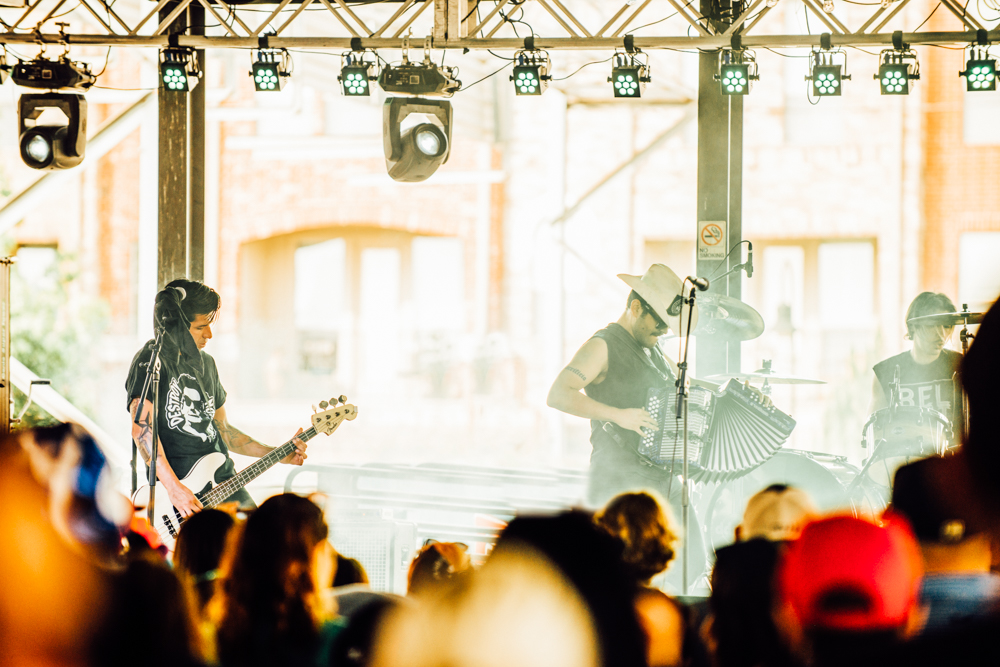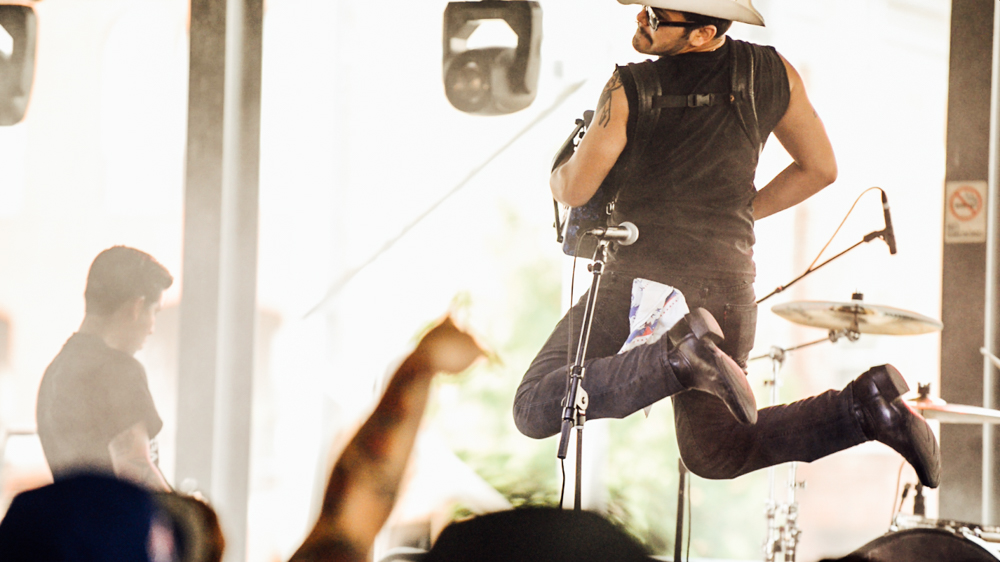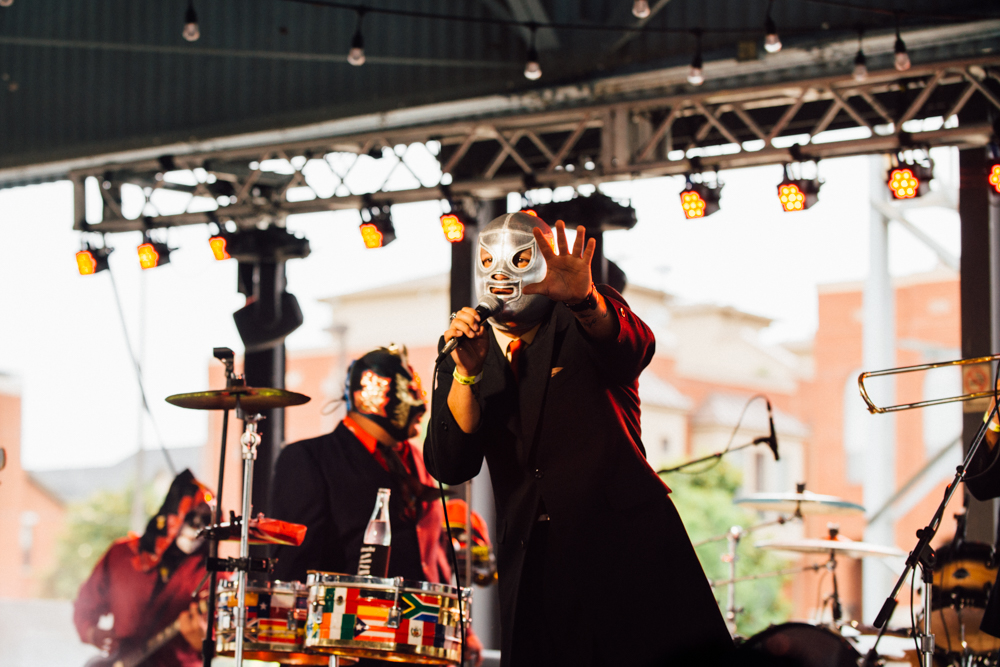Hey everybody! I would like to introduce you to a new livestream platform designed specially for the “food obsessed” called Kittch! I’ll be teaching classes regularly on this new platform, you can follow me there to stay in the loop and attend all the cooking classes and demos your heart desires. See you at the table!
No Coração do Brasil
For the past two years I've had the opportunity to visit local churches and serve as a missionary and translator in the cities of Rio de Janeiro and Macaé, Brazil. There is a lot I could tell you about these trips, the many things I saw and felt and learned. But here is the bottom line and overarching theme of everything I experienced, the message that the Brazilian people repeated to me time and time again: there is a God who changes hearts, and when he does truly amazing things happen.
Jefferson, founder of Casa do Abraço | 2016
This is Jefferson. He founded Casa Do Abraço (House of Hugs) in 2010. A small group of young people without any money who were concerned about the future of the kids living in their community. A few years later, what started as a volunteer project became a full time endeavor and he and his team began to take care of the kids in the community after school every day, providing food, tutoring and a safe haven. But above all else, his goal was to teach these children that they are loved and valued, a message often unheard in one of the poorer and more violent communities in the city of Macaé, Rio de Janeiro State. When Jefferson enters the gate the kids' moods instantly change. They behave better, they all flock around him, they tell him if other kids were mean to them, they listen (begrudgingly, but listening all the same) when he corrects them. They know that he loves them, and they love him back.
It's kind of surreal hearing some of the kids' stories. Some of them have been beaten. Some of them have seen their parents murdered. They see people doing crack and heroine. Guns, strangers, drugs, that's just normal life here. It's a reality most of us are far away from. We tend to hone in on the harshness of the the day to day, the roughness of the neighborhood, the struggle and the suffering, because it can be shocking to us. But that's just life for them, it's not their focus. Their focus is hope.
Photo: Claire Hargis | @clargis
Last year I had a chance to talk more with Tais, the only other full time volunteer at the house. Tais is an incredible woman, she studied graphic design in school and then entered into a seminary program, visiting Casa do Abraço while studying. It was only supposed to be a short visit "but when I saw what God is doing here I felt called to stay and, you know, the rest is history." Tais is sweet and has a huge heart, but she's stern and has a look that can stop you in your tracks. As you can imagine, it gets a little crazy in there with 30 kids running around, all different ages, all different personalities, but she manages to keep them in line. She taught them a sign and will shout "BA ba ba ba bum" to which all the kids respond in unison "BA BAM!" followed by silence. "Só eu falando agora," she will say authoritatively ("I'm the only one talking now.") And they listen. And they love her. When I asked the kids to write things that made them happy on paper hearts, many of them wrote her name.
Photo: Claire Hargis | @clargis
Sometimes they bring in volunteer doctors or dentists to the house to give the kids check ups. They bring in music and art teachers to do activities, volunteer barbers to cut their hair. Other groups in the city come by, other churches in different parts of Brazil come too. And it's not about trying to get out of the community. It's not about being successful (whatever that means) so you can leave, that may never be an option. It's about doing good where you are now. And that's something I think we all need to learn.
Photo courtesy Casa do Abraço
Rio de Janeiro | 2017
So you might be asking yourself, what business do a bunch of Americans have going to these communities in Brazil? I asked myself that question before going the first time. I'm usually not a supporter of short term trips like this, in most cases they do more harm then good. But I'll tell you why I keep going back. The work we do is 100% complementary to work that continues year round. We're not going to start something and leave it for someone else to finish, we come as a support team to existing work by Brazilians who live in the area. We help them do what they always do, give them a bit of a break, and help spread the word to what they are doing to the rest of their community. There is a give and take, but we go to learn from them more than to teach them anything. I always learn something, and I always come back changed.
And I'll leave with this, sometimes we have this weird concept that beautiful things only come out of beautiful places, that happy people only come out of happy places, that those who start with little will only have a small impact, and we forget that the savior of the world was born to a poor family living in an unimportant city with a bad reputation. Do what you can with what you can. It's enough.
_________________________________________
UPDATE
I originally wrote this post back in March, 2017. I am sad to say that Jefferson passed away last fall after a bout of pneumonia. It was sudden and unexpected, the community was shocked. A friend of mine who attended Jefferson's funeral said he has never seen more people gather at a funeral before in his life. He was deeply loved and is greatly missed. His memory lives on in Casa do Abraço. Tais continues the work that he started along with other volunteers who have stepped up to ensure that the kids continue to have a place to go. More about Casa do Abraço (website in Portuguese): http://casadoabraco.org/
Texas Today
Recently I had the opportunity to chat with Texas Today’s Vivian Kwarm about food, travel, and adventures at home. You can watch the segment below and see Vivian try chapulines for the first time!
Host Vivian Kwarm trying chapulines for the first time. Photo courtesy Ever Huerta.
Blue Zones Live Well Podcast
Got to hang with Ricky Cotto of Blue Zones Project Fort Worth to talk about food, plant based cooking, why people are so chaotic when they cook, and a lot more on the Blue Zones Live Well Podcast click on the link or search for ‘Blue Zones Live Well’ wherever you listen to podcasts..
Walls to Tables
The morning of December 25th 2016 I had a dream. It was short, maybe five seconds, and I saw something like an ink drawing of people sitting down at a long table on what might have been our country’s border with Mexico, and I heard a voice ask the simple question: What would our country be like if we replaced our walls with tables?
Then I woke up.
I usually don’t remember my dreams, but this one stuck with me and I kept thinking about it. What would that be like? What if we tore down our walls and out of the rubble constructed a huge table where both sides could sit down and eat? Where “both sides” disappear and there is just one table where everyone could come to a feast. And walls and borders don’t just mean the ones of our countries. Our gates, our privacy fences, all of our walls, physical, imagined, and otherwise. What would happen if we turned them on their sides and ate on top of them? What would happen if we understood that our safety, comfort, and ideology weren’t more important than the lives of others? What if we finally understood that no one wants to be tolerated, but loved? That no one wants simply to be heard, but to be understood? These are not rhetorical questions. I’m asking because I’m not sure what would happen.
Artwork by Anna Guillory
Now you may be thinking, this isn’t safe. And you’re right. There is risk involved. Vulnerability abounds. Fears are exposed. Prejudices and preconceptions sound their concerns. Secrets come out into the light. But it’s good to be in the light. We see beautiful things in the light, things we haven’t imagined. We learn about others and ourselves. We learn that being human is more complex and far-reaching than our own experiences suggest, that life is far scarier and wild and beautiful than we previously understood. I am not proposing recklessness, but rather that the greatest safety comes in truly knowing our neighbors. We can build our walls high but walls can be scaled. We can hold our guns tight, but the barrel may jamb. But when you really know who you are, and when you really know who your neighbor is, that brings about peace.
So try it. Sit down with someone not like yourself. Go somewhere new. Share a meal with a stranger. Make new friends. And ask yourself, what would it be like if we replaced our walls with tables?
Food is a lot like us
Photographs by Matt Allen | @mattallen
Food is a lot like us.
The processes by which a complex flavor is made can be somewhat intense. Extreme heat, violent dismemberment, tedious waits under controlled conditions, careful pruning, exposure to disagreeable counterparts. And every time the simple, base ingredient is put through one of these processes, it is changed (not always for the better, but that is the hope). In many ways the beginning product is the same, and yet it is completely different. Flavors deepen. Colors change. Textures develop. If the flavor is simple it is because it has not experienced enough.
Sometimes flavors are overpowering and need to be made more subtle so they can work well with the other elements on the plate; other flavors are so delicate that they must be drawn out so they can be noticed at all. Some elements need to be broken down before they are at all usable, others to be built up. All are needed, all have their place. Not that anything was “wrong” with these things before, they simply cannot be used in the way needed while in their raw state. Some are too bitter, some are too sweet; some will even make you sick. They must go through a change.
Before the dish takes form and the ingredients are being prepared it’s easy to look around and think, “How the hell is this going to come together?” The fires blaze, the ovens rage, remnants of discarded waste pile up, nothing looks the way it was intended. But if you make it through this stage you begin to see the evidence of what you hoped for in the beginning. The aroma changes, you can smell it. The liquid thickens, you can see it. It doesn’t feel so much like chaos because the end is in sight. As the elements come together, the anchor, the main, the side, the sauce, the garnish, the final touch, you almost forget what they started as. Almost. But the sweat on your brow, the burns on your hands, the smell of smoke on your skin stand as reminders of what it took to get there. And I can’t help but think that food is a lot like us.
Remembering the Mexico City Earthquake
The night of the Mexico City quake I couldn't sleep.
It hit while I was at work in the morning. I got a text a few minutes after from my friend "Another earthquake. CDMX."
“Is it bad?” I asked.
"Bad," came the response.
I didn't really fully understand the gravity of the situation until I got home an hour later and started seeing photos and video. I sat on my bed and pulled up live streaming news from Mexico City on my laptop and scrolled through Facebook on my phone. Debris, death counts rolling in, streets I'd walked earlier that year covered in concrete and rubble. My phone kept buzzing, friends texting back that they were ok. It was surreal.
Photo via Vox
I went back to work that night, but it was hard to focus. Everything was normal here; passed apps going around the room, wine glasses clinking together, small talk and polite laughter filling the space all the while my friends were moving rubble with their bear hands, sirens and shouting echoing in the streets.
The next morning was the same. Friends texting photos. Live feeds of relief efforts. That terrible feeling of anxiety building up, that unique nausea that only comes from not being able to do anything, from sitting still when all you want is to move. I asked if there was anything I could do. "Pray," they said. And I was praying. But the words of the scriptures echoed in my head, "faith without works is dead."
I thought back to my first time in Mexico City. We were setting up for an event and someone had stolen a piece of expensive equipment and we were trying to figure out how to replace it in time. I had 300 pesos in my pocket (less than $20USD), I handed it to the organizer, someone who would end up becoming a close friend, "I know it's not a lot, but --" he stopped me and looked me in the eye. "It is enough."
Maybe I couldn't do a lot here, but there had to be something. I can make tacos, I thought. That's something. I grabbed a note card and wrote FREE TACOS FOR MEXICO at the top, scribbled out a menu, made the event on Facebook, invited a handful of friends and that was that. Expected turnout: twenty people. If nothing else we'll raise maybe a couple hundred bucks and show some love to a country that's special to a lot of us.
Photo by Walt Burns
Almost instantly it started getting shared on Facebook and Instagram. Within a few hours I got a call from Luis at El Come Taco, "What do you need for your event? We want to help." Later that evening I got a message from chef Jaime Fernandez offering to help cook the tacos for the brunch. Then Craftwork Coffee Co. and Alma’s Paletaria got on board to provide drinks. I got messages from others on Instagram saying they were coming and what should they bring. Noel Ortega of Crazy Casa asked what we needed for the set up. And at first, I was thinking, we don’t really need all these stuff, it’s going to be too much. It’s only twenty people, we don’t really need tables and chairs and tents and a 10 foot inflatable photo booth. “Just bring a few chairs,” I said. “I’ll let you know if anything changes.” If you were there, you know that things changed.
Photo by Walt Burns
By the next day there were already a lot of people interested in the event, and a lot saying they were going via Instagram, facebook and text. It was hard to run the numbers but I was starting to realize that this was going to be bigger than I originally thought. More like 50+ for brunch, at least. That night I went to a Latino Hustle gallery showing and found myself talking with Guillermo Tapia of ArtLuck. “You’re doing the tacos on Sunday, right? What if we made it bigger?” He asked. “I would need a lot of help.”
He had the idea of extending it until the evening, adding an art gallery and silent auction, more tacos, got us a beer sponsor, Soy Capaz would bring the beats, Fabián Alvarado would cook. In essence the event just doubled, no tripled, in size.
Photo by Walt Burns. Painting by Jesse Hernandez.
More people kept hopping on board, everyone brought something to the table that no one else could bring. Artists like Jesse Hernandez donated their work for free to be auctioned for donation. People brought plates, napkins, cups, they brought their friends and family. Everyone who said they were coming, came, and then some. All the volunteers showed up. Everything was set up and ready to go. We had enough food for everybody. We had enough beer for everybody. We had enough chairs for everybody. It couldn’t have gone any better. Well over a hundred people showed up to my house many of them complete strangers, we made hundreds of tacos and together raised $2,300 for relief efforts on the ground in Mexico City and Oaxaca. Friends in Mexico saw the party we were throwing for them and messaged me to tell me how much it meant to them. It was enough.
Photo by Damian Labarrere
It felt significant to be back in Mexico City for the one-year anniversary of the quake. The sismic alarm went off at 1:14 PM as a memorial and as a citywide drill. I was in a bookstore when it happened, the clerk came around a few minutes earlier to make sure people were aware of the drill so no one would be scared. Whistles started blowing in the street, “Este es el alarma.” We all calmly walked out into the street. “Alerta sismica. Alerta sismica,” repeated the robotic female voice. It was quieter than I expected. Some people were somber, others filmed it on their phones, others ignored it completely. A weak and awkward applause from people in the street followed the drill. It was anticlimactic. It wasn’t what I expected but in a way it seemed hopeful, the city has recovered so well in one year to the point where a memorial feels inconvenient for some. But as I walked out with everyone I couldn’t help but imagine what it must have felt like that day.
Later that day I was talking with my friends Damian and Kristina about that day, hearing their experiences as we walked the streets rebuilt. Kristina told me she cried during the drill. The memories were still fresh for her. Damian told me about how seconds after the quake people mobilized. Restaurants and business doled out food; people on bikes and motorcycles taped bottled water to their bodies to pass it out in the streets that were inaccessible via car. He pointed out buildings and streets, having a story for each of them. “You would have loved to be here on that day,” he told me. Kristina shook her head, “No, it was horrible.” But I knew what he meant. To see a people band together, to give freely, to help willingly, to sacrifice without weighing the cost, that is the beauty that sprung up instantly out of the rubble that day. I wondered if we could ever experience that outside of crisis or disaster. I believe we can.
I’m grateful to have been there on the anniversary, to see my friends, that they are well, and to walk the streets of that beloved city, to see it strong, rebuilt, and standing as I always knew she would.
Resident Taqueria - Dallas, TX
“We are not an authentic taqueria, I want everyone to know that,” says Andrew Savoie, chef and owner of Resident Taqueria. “I like the term inspired Mexican cuisine, because I am inspired by Mexican cuisine. We build tacos based on flavors that work well together. There is no reason to go outside of the box, flavors are there for a reason.”
This is one of the things I like about Resident Taqueria, that they know who they are as a restaurant. In a time where the words “authentic” and “traditional” are often put up as neon signs out front to attract taco hunters, only to lead to disappointment, it's nice knowing what to expect before going in. Located in the Lake Highlands neighborhood of Dallas, Resident is a great taqueria, but it's not a hole in the wall. The place is stylish, the menu touts a range of vegetarian tacos, and there is nothing wrong with that.
While the flavor profiles might not be out of the box from a chef’s perspective, the tacos are certainly different from what you will find elsewhere. Pecan smoked chicken with pickled sofrito, crushed peanuts and salsa macha; glazed pork belly with cucumber, pickled slaw and agave glaze; braised beef short rib with onion, tomato confit and chipotle creama; Argentine red shrimp with blistered cherry tomatoes, and emulsified chimichurri sause to name a few. And let’s not forget the veggies; caramelized cauliflower with crispy kale, pepitas, and lemon epazote aioli; slow cooked mushroom with poblano chiles and almond salsa, and their non-traditional guacamole with garlic infused oil and English peas (don’t get mad about it until you try it). Then there's the handmade flour tortillas, not the thick chalky ones we've all had with fajitas, but thin, almost transparent, straight from the press tortillas. Easily the best flour tortillas I've had since Sonoratown in Los Angeles.
Pork belly taco with cabbage, pickled carrots and red onions, micro greens, and agave glaze.
Andrew Savoie, Chef and Owner Resident Taqueria
Handmade flour tortillas.
Savoie’s interest in culinary experiments and flavor combinations is no surprise. Originally from New York, he got his degree in Culinary Arts from Baltimore International College and began to make his way around the country through the fine dining scene. Savoie has worked in kitchens from New Orleans to Napa to New York before eventually making his way to Dallas in 2003. “In 2003 the food scene in Dallas as awful,” Savoie says. “Just Tex Mex, just chain restaurants. I didn’t want to work for a place that had no passion." So he took a break and sold wine for a few years before becoming a Culinary Instructor at the Art Institute of Dallas, a position he held for 9 years. “I was trained in French cuisine, Latin cuisine was completely different, all I knew was cilantro and lime,” Savoie laughs. He started researching Latin cuisine in preparation for a new class he would be teaching and quickly fell in love with it. “When you bite into something, your palate wants to be hit in different ways, and Mexican cuisine does that. I could eat and eat and eat and not get tired of it.” Savoie has since studied the Mexican culinary tradition extensively, and while few items on Resident's menu are traditional, he very familiar with it, even winning best traditional taco at Tacolandia Dallas last year (along with best vegetarian taco).
Sangria
As a hyper local place, the residents have a lot of say of what goes on the menu. The main menu board hasn’t changed in three years, if something goes missing the neighborhood asks for it until they get it back. “We have specials so I won’t get bored,” Savoie explains. “I like to serve things that I can teach people about.” Like the rotating selection of tequila and mezcal, for example. He's taught a lot of his meat loving customers to come back for the veggie tacos too; the cauliflower and kale taco rutinely outsells all the other tacos.
Caramelized cauliflower with oven roasted kale, epazote aioli and pepitas.
While there are now six new taco spots opening up within a few blocks of Resident, when it opened three years ago there was nothing in the area. Savoie wanted to create a place for the people in their neighborhood to get tacos. The community is proud of the place, they know it exists for them. 95% of the customers who walk are regulars who live in the immediate vicinity, Savoie greets them by name when they come in; they chat like neighbors do. “I know I could make more in a more high volume area," says Savoie. "But this is a taqueria from my neighborhood, and that’s what I want it to be.”
Resident Taqueria is open for breakfast Monday through Saturday 7am to 10:30am, lunch and dinner from 11:00am to 9pm. Curbside Taco Tuesday Family Meal special every Tuesday. For more about Resident Taqueria visit www.residenttaqueria.com and be sure to keep up with them on Instagram @residenttaqueria
Ya No Nos Quieren Aquí
The following are parts of two conversations I had not long ago. While these are the two most recent instances, I’ve had a version of this conversation with more people than I can remember.
I was out getting tacos at one of the trucks I frequent and an older gentleman walked up and saw me sitting at the only folding plastic table. He hesitated, then sat down in the other chair and greeted me quietly in accented English. I returned the greeting in Spanish, which surprised him (story of my life), and we continued speaking in Spanish.
“Are you here to eat tacos?” he asked me.
“Yes sir, of course.”
“How strange to see a güero eating tacos.”
“But we’re in Texas,” I laughed. “It shouldn’t be that strange, right?”
He looked around casually from left to right then back to me, “Do you see any other gringos here?”
We chatted a bit, I told him a little about my story and why I speak Spanish, he told me a little about himself, about his kids and his ex-wife, and then he told me this: “I’ve been here for 20 years, and you know what’s bad? They (Americans) don’t want us here anymore. Honestly, I wasn’t even going to sit next to you because (Americans) don’t like us.” Let that sink in. A man who has lived 20 years of his life, over a decade of that time in Fort Worth, and he hesitates to sit down next to me because of how people treat him on a regular bases.
A month or so later I was out again ordering tacos, this time at different taqueria, in a different city. After I order, the cashier says to me, “you know it’s really strange to see someone like you speak Spanish. People here don’t like to speak Spanish. They don’t like to speak to us at all. And I really don’t understand it.” She patted her arm, gesturing at the veins “God made us all and put the same blood flowing in our veins,” she shrugged her soldiers, “I don’t understand it.”
So let me submit something to you. If we are treating our neighbors in such a way that they don’t even want to sit next to us, that they are shocked that we would even speak to them, then something has gone terribly wrong with our politics, our religion, our lifestyle, out morals, our codes, creeds, or whatever else we may hold to.
El Come Taco
I arrived a little before taquería El Come Taco opened. Luis Villalva, chef and owner of El Come Taco in Dallas welcomed me into the hallway-shaped shop with bright pink walls, a color-changing backlit service counter, mezcal bar, open kitchen, and, most importantly, some seriously good tacos.
The Mexico City style taquería is coming up on its four-year birthday off Fitzhugh Ave in Dallas, but Luis’s taco making career started as a ten-year-old kid growing up in Mexico City. His family hit some hard times and he started helping out at one of the family's two taco stands in the metroplex, learning the taco trade on the streets of la CDMX.
As a teen he moved to the US, landed in Dallas and has lived in the same neighborhood ever since. “In high school I went to the Jack in the Box almost every day,” Luis told me. "It was like my house. I really didn't like the Mexican restaurants around here. Everything just tasted like cumin." Let me be the first to tell you that everything at El Come Taco does not taste like cumin. A lot of shops around town claim to have "street tacos" and they are usually anything but. When I eat at El Come, their tacos really take me back to Mexico City, simple on the surface but packed with a ridiculous amount of flavor. These are tacos that leave you asking two questions: “How does this taste so good?” And “Why didn’t I order more?”
Chorizo and Nopales, Marinada (Marinaded pork), Suadero and Potato
Pastor, Campechano, Lengua
Luis told me that respects what other chefs are doing with tacos, but rightly says that sometimes there are too many flavors in the tortilla and you end up kind of lost. “You don’t have to use five hundred ingredients to make a taco," he said. "It can be simple." And he’s really mastered the technique of using few ingredients and getting every ounce of flavor possible out of them. A great example of this is one of their side items, the cebollitas or grilled green onions. They couldn’t be simpler, but my god, they are delicious. I could eat two plates of those things without thinking twice about it. That said, I’m willing to bet that some things that might be simple for Luis who grew up preparing them are actually pretty complex, like all the scratch made salsas. There is a lot of time and technique that goes into making those salsas, and you can really taste it in the final product.
Cebollitas
Roasted Tomatillo Salsa, Pulla y Arbol, Tomatillo y Aguacate, Morita.
From CDMX to DTX
I asked Luis what most inspired him about Mexico City and how he translates that to El Come. "It's the freshness of Mexico City," he said. "You know, you've been there, everything in the markets is super fresh, you can walk down the street and get what you need. And we eat grasshoppers and cactus, and people don't know that these things are edible. You still have to teach people how to eat Mexican food, but in Dallas they are learning that it isn't about cheese and chips and salsa."
If you know me, you know I have no qualms about eating standing up on the street corner at night, stray dogs at my feet, or sitting on a plastic bucket on the side of the road if it means good street food. Not everyone is about that, and I get it. That's one of the cool things about El Come Taco, you get the flavors of the street but with tables and chairs in a comfortable setting. It's an entryway, a bridge for a lot of people, to a beautiful (and delicious) culinary tradition, and that's a huge acomplishment.
Chef and Taquero Luis Villalva
As delicious as the food is and how smoothly everything runs at El Come I was surprised to hear that this is Luis's first time running a kitchen. "I'm not a chef, man," he told me. "I'm just a taco guy." Taco guy, chef, as far as I'm concerned he can call himself whatever he'd like, his tacos are some of the best in town and that's a fact.
A family business
Luis works with his family: his mother, his wife, his brother and sister, and it can be challenging. Sometimes we romanticize the family run business, the quintessential "mom and pop" place, but try to imagine working with your family day in and day out. I love my family, but I couldn't do it. Family can be our toughest critics, because they know us on so many levels and they usually aren't afraid to share their opinions. “I never worry about when the health inspector or anyone else is coming, I know everything is the way it needs to be," Luis said. "But when my father comes, if everything isn’t perfect I’m going to hear about it. If today something is good, tomorrow it has to be better.”
House made Horchata
We talked a lot about Luis's path to El Come, some of the struggles and challenges he's faced and still faces, so as a final question I asked him what the best part of all of this was; what makes it all worth it? “This place has made my parent’s dream come true," he said. "And somehow I became passionate about the food too.” And that passion, that love for the craft, the food, and the family, that shows. And that's what makes this place truly great. That and the tacos. The tacos are phenomenal.
El Come Taco is located on 2513 N Fitzhugh Ave in Dallas, TX. They are open Tuesday through Thursday 11AM to 10PM, Friday and Saturday 11AM to 12AM and Sunday 11AM to 9PM. P: +(214) 821-3738
Dorilocos
We've been doing Doritos all wrong. If you're like me, for most of your life you've just eaten them out of the bag. Just like that. What else are you supposed to do with them? As a kid I would put the Cool Ranch ones in my PB&Js (I know), and the most I had ever seen someone do with a Dorito in other countries was dip it in salsa. Granted, they do release crazy limited edition flavors (especially in Asia) including gems such as Clam Chowder, Mountain Dew, 3rd Degree Burn Scorchin' Habanero, Fish Taco, Shrimp Mayo, Tomato & Onion Salad, and Crispy Salmon, but we stop there. Mexicans, however, don't stop there. They created something called Dorilocos or "Crazy Doritos".
Nacho Cheese Doritos, carrot, beet, and cumber shreds, curitos, Hot Nuts Fuego, chamoy, Tajín, lime
My first Dorilocos encounter was something like confusion with a side of curiosity and amazement. I was waiting for a combi in Nezahualcóytl, Mexico City and I saw someone eating a bag of Doritos out of the side of the bag with a fork. Later on I saw the carts and tents in the tianguis* dishing these out like nobody's business. Hot sauces, jicama, beats, nuts, carrots, fruit, a seemingly endless variety of stuff all went in the bag, only to come out again at the command of a long plastic fork. So what exactly are these and how did all this get started? To answer that we have to go way back in time to the 1960's with the birth of the Dorito.
Flamin' Hot con Limón Doritos, sliced avocado, salsa guajillo, salsa Valentina, Churritos Hot, lime
Doritos were invented in Disneyland, of all places, in 1964 as part of their "Mexican" (I use the word very loosely here) restaurant called Casa de Fritos (Fritos referring to Frito-Lay) as part of their Frontierland park. Journalist and author Gustavo Arellano of the OC Weekly explains that one of Disneyland's suppliers, Alex Foods, started making the chips as a way to use up tortillas that were going to be tossed out. They were plain tortilla chips, or totopos, and it wasn't until 1972 that the famous Nacho Cheese flavor was introduced. They also had a vague flavor called "taco" before the Nacho Cheese came out.
To be honest, Frontierland sounds like my worse nightmare. Just looking at the listed menu items on old posters makes me cringe, and the photos I've seen of the place embody every Mexican stereotype imaginable. I wasn't able to find the exact date when Doritos were introduced in Mexico, I even spoke to a Frito-Lay corporate rep about it who was very polite and wished me luck with my blog but said he did not have the information I was searching for. I imagine it wasn't long before street venders started dressing up Doritos with Mexican flare. After all, the same concept had already been applied to other chips, totopos, and chicarrón in a simpler fashion with salsa and lime.
Cool Ranch Doritos, Japanese peanuts, pickled red onion, dried mango, salsa Valentina, jicama, shredded cucumber, Tajín
Truth be told, the first time I saw Dorilocos in all their glory my first though was: "oh my god." Like a lot of things in Mexico, it seemed like too much. Too many flavors, too many textures, too many colors. How could this possibly be good? But Mexico City has a way of pulling off sensory overload in a really sophisticated way, and Dorilocos are no exception.
Incógnita Doritos, salsa guajillo, candied jalapeños, curry, cilantro.
Yes, I just said that gas station chips tossed with what seems like the entire contents of the pantry are sophisticated. Let me explain why. The word sophisticated comes from the Medieval Latin word sophisticatus which means 'tampered with', and later in Middle English it referred to something that had been 'mixed with a foreign substance' or 'adulterated'. In modern English it has come to now mean complex, shaped by experience, worldly. Dorilocos take a foreign substance (Doritos), tamper with and mix them with local elements and have, over time, been made more and more complex through the experience and influence of one of the biggest cities and cultural centers in the world. Dorilocos, by definition, are sophisticated.
Salsa Verde Doritos, Avocado slices, Mexico City esquites, cilantro, lime mayo, raw tomatillo and lime.
Dorilocos really don't need a recipe, they are really a throw and go kind of snack, but I put together something for you guys if you want to try these at home. It's kind of hard to define what a 'classic' Dorilocos combination would be, but of all the different varieties I've seen there are common elements throughout and that is what I've put on the classic here. I've also put together a new mix for you guys. That's the fun of Dorilocos, there is no wrong way to do it. Have fun, experiment, use what you have, try new flavors and combinations, and don't be afraid to get a little crazy.
* Tianguis are magical open air markets that take over entire blocks of the city on certain days of the week and have everything from produce and meat to tacos and other prepared foods.
Coffee Folk
Gina and Brian Milligan's Coffee Folk provides coffee for the people. Their coffee cart officially opened this March and has been gaining traction with Fort Worth locals ever since. They rebuilt a 1974 Coachman Travel Trailer from the axels up, keeping some of the classic lines of the original but expanding the roof and giving it some stylish upgrades. With a pull lever Italian made Ranchillio espresso machine, pour over station, an arsenal of homemade syrups and flavors, baked goods from local bakeries, and breakfast tacos from Fort Worth's own Taco Heads, I could live inside this trailer forever.
You can find the sleek black coffee cart parked in the Meadowbrook neighborhood of Fort Worth, and it stands out as the only place of its kind. Brian and Gina have done an amazing job of turning their little patch of the neighborhood into a hyper local gathering place. "It's nice being 5 minutes away from work," Brian told me as I sipped coffee inside the trailer. "And it's allowed us to meet a lot of people in our neighborhood.""It's made Fort Worth a little smaller," Gina added. "One of the best parts about this is being able to greet our neighbors in the morning." I sat in the trailer and watched as they greeted many of their customers by name, having their drinks started before they even made it to the window. They talked about work, their dogs, things going on in the neighborhood.
I have to admit when I first went to Coffee Folk it was because I liked the set up, but I wasn't expecting much from the coffee. Needless to say I was wrong. It's some of the best coffee you can get in the city. The coffee duo learned a lot about coffee at home, but received some training from Andrea Spella of Spella Cafe in Portland, Oregon. Andrea is something of an OG of the coffee world, and has a really classic Italian style to his shop and coffee. Spella Cafe also started out as a coffee cart, and the Coffee Folk crew fell in love with his coffee while visiting different roasters.
Whenever I go to a new coffee spot I usually order an espresso or cortado to see what their coffee really tastes like. And more often then not, it's nothing to write home about. But when I tasted the cortado at Coffee Folk, sitting outside at the small cafe table, listening to the goings-on of Meadowbrook, savoring the smooth, enchanting espresso, it took me back to my days in Europe, to the little shops and bars on the street, people standing and drinking coffee, no one on laptops working with their earbuds in, just visiting with one another and getting their daily coffee. And I think that's one of the things that makes Coffee Folk special, they've taken the spirit of old world coffee culture, of the neighborhood coffee bar, and added some strong Texas flow. Their attention to quality and love for their community make this a truly unique spot. But don't take my word for it, grab a friend and try it out for yourself.
You can visit Coffee Folk Thursday through Friday 7am to 1pm and Saturday 8am to 3pm at 4147 Meadowbrook Dr, Fort Worth, TX 76103
Keep up with what they're doing on Instagram @coffeefolkcafe or Facebook at Coffee Folk Cafe
CASA MASA
John Hernandez, tamalero and owner of Casa Masa, and I first met because he was making fun of me for taking pictures of my lunch. "Your food's going to get cold if you keep taking pictures of it," he said, looking at me with a 'just eat it already' look. "I know, I'm the worst," I said, all the while arranging things on the table for the photo. Gram or it didn't happen. We got to talking and on my way out John mentioned that he does tamale pop ups. *record scratch* You make tamales? Why didn't you tell me this earlier?
Jokes aside, John is a truly great tamalero. This summer I've been visiting the Casa Masa pop-ups in Dallas, often appearing at the Double Wide's monthly flea market by the Dallas Farmers' Market, breweries, gallery showings, and other events. When I visited Casa Masa at the Double Wide he was set up inside a classic Airstream mobile trailer slinging six different kinds of tamales. Green chile pork; cilantro chicken with roasted tomatoes; black beans, jack cheese and jalapeños; zucchini, carrots, squash, kale, roasted corn and red peppers; sweat potato, kale, cumin and shallots; ancho chile brisket with queso and pico de gallo. I'd never seen tamales like this before. The choices were overwhelming, so I did what any reasonable person would do and ordered one of everything. He pulled the warm, corn husk wrapped tamales from their steamy beds, and in seconds I was enjoying some of the best tamales I've ever had.
I sat down inside the airstream and tried the first one. Simple but flavorful queso oaxaca, the slightly sweet, mildly smoky roasted chiles, the perfectly seasoned masa, smooth and luxurious. "Damn," I thought. "I expected them to be good, but not this good." I tried the pork. The texture was phenomenal. It wasn't stringy or dry, it was juicy but not soggy. For something made out of masa and pork, it felt light. Then I tried the veggie options. Sweet potato and cumin with kale was surprisingly one of my favorites. I'm so used to sweet potato being, well, sweet. Making it savory with cumin and other spices gave it a whole new flavor. And I know everyone is eating kale these days because it's good for you, but let's be honest, kale doesn't taste good. It's tough and the flavor is strong in all the wrong ways. John makes kale taste good. I don't know what kind of South Texas magic he puts on these tamales, but I'm not complaining.
John comes from a family of tamaerlos and restauranteurs, learning to make tamales with his mother and grandmother. Making tamales is a passion for John, and his love for the husk-wrapped bundles of masa really comes through in every bite. But more than that, it's a way for John to carry on the family tradition and continue to honor and cherish what his mom and grandma taught him while at the same time making the tamales his own.
As I snapped a few photos of the last two tamales before devouring them and heading out, an older gentleman outside the airstream called out to me, "You're supposed to eat it, not take pictures of it!"
I shrugged my shoulders, "it's not the first time someone's told me that."
He started laughing. "Now listen, the first time I saw people doing that I said 'that's so stupid', and now look at me!" he held up his phone for me to see, "Every damn meal, I'm taking a picture of it!" He smiled, dismissed me with a wave and was gone.
_____________________________________________________________________________
Keep up with the Casa Masa pop ups on Instagram @casamasatx and Facebook Casa Masa. Word to the wise, get there early as the tamales routinely sell out before closing time.
Taco Gear X WERO
This week I had the pleasure of once again working with Gerald Flores and the Taco Gear team to bring you guys some summer vibes! Gerald and his company are awesome, I always enjoy doing colabs with him. Check out his blog Taco Talk for the Grilled Lime Margarita recipe, and their website for all things taco.
Wero Brand
I'm happy to announce Wero Brand! I've got some t-shirts for sale on the new Store section of the website. Check it out! Right now the Make Tacos Not War and Nixtamal & Chill shirts are available, but I'll be rolling out new designs fairly regularly so keep an eye out on the @werobrand Instagram.
WK SUMMER PLAYLIST
The WK Summer Playlist is up on Spotify. Made for relaxing by the pool, road tripping, grilling, or whatever else you're summer has in store. Enjoy!
Fort Worth Taco Tour with Pyknic
This week I got to do a guest post with my friends from Pyknic and give them a tour of a few taquerias here in Fort Worth. Part one features Taco Heads in the city's Cultural District. Check out the post and more photos on Pyknic's blog. Keep your eye out for part two, coming soon!
Taco Libre Dallas
This past weekend I got to hang out at Taco Libre Dallas, a festival celebrating the beauty that is the taco. Represented at the event were 20 plus taquerias from the DFW and beyond.
At the event my taco guides were Michael and Anthony. Michael, aka TacoTeur, is a world record taco eater, currently at 392 consecutive days eating nothing but tacos (that's 3,544 tacos at the time of this writing). Check out his Instagram for daily taco posts if you don't believe me. Ant (Ant Eats) is another taco lover in the area who I will forgive for eating his tacos with just meat (no salsa, no onion, no nothing) because he walked the entire festival with me trying tacos.
There were a ton of amazing tacos to try, here's a quick rundown of what I ate (in the order that I ate them).
Resident Taquería
At Resident Taquería I had their whole head barbacoa taco (check their Instagram for photos of the seasoned beef head they slow cooked). This was some seriously good barbacoa and a great way to start off the festival. The guajillo and green salsas had a great balance of heat and flavor that lent itself really well to the tender and juicy meat.
Maskaras MEXican grill
At Maskaras I got the signature Maskara taco with seasoned beef, cheese, guacamole, pico de gallo, and salsa verde. Texas sized for sure, this was the biggest taco I had all day. It was a great second taco, the beef was tender and caramelized with a crispy edge, paired with unctuous avocado and spicy green salsa I could have eaten five more of these.
Revolver Taco Lounge
I'm a sucker for a good octopus taco, but because octopus is challenging to prepare I'm pretty picky about where I'll order it. At Revolver Taco Lounge they know what they're doing. Topped with a heaping handful of fried leeks and the best salsa verde I had at the event, Revolver's taco de pulpo cannot be missed.
Urban Taco
Urban Taco was serving up some Michoacán style Carnitas de Cazo and Barbacoa de Borrego (goat barbacoa). They went old school and cooked the goat the traditional way by slow cooking the meat buried in the ground. The texture and flavor of the meat was as beautiful as the presentation.
(At this point I was beginning to fully realize that there were no bad tacos at Taco Libre and to wish that I had four stomachs like a cow so I could try them all.)
Ki' Mexico
All the way from Shreveport, Louisiana Ki' Mexico was serving up some great tacos, but what had everyone talking was the Tofu Gringa. Ki's ancho and guajillo seasoned tofu with melted, savory queso oaxaca, jade salsa verde, onion and cilantro on a flour tortillas was absolutely killer.
El Come Taco
El Come Taco had probably the longest line out of any of the taquerias that I saw represented, and for good reason. By nature I'm skeptical of places that describe their tacos as authentic Mexico City style, but when I bit into El Come's alambre (beef with vegetables and cheese) I became a believer. Maybe it was the sharp sizzle of the beef as it hit the grill, the rapid scrape of dueling spatulas in the taquero's hands, the crowd of people all around, the simple but demanding flavors, but for a second I almost forgot where I was.
WRAPPING UP
All in all, a fun festival with a truly great selection of tacos. If you missed the Dallas event, don't worry Taco Libre Austin is May 15.
Cheers to José Ralat of Taco Trail for curating this event. Looking forward to next year!
José Ralat getting the gram at Taco Libre Dallas
Labarrère
You guys remember Damián from the last post? Apart from being a phenomenal chef, he's also a brilliant leather craftsman. While in Mexico City he made me the best apron I've ever had.
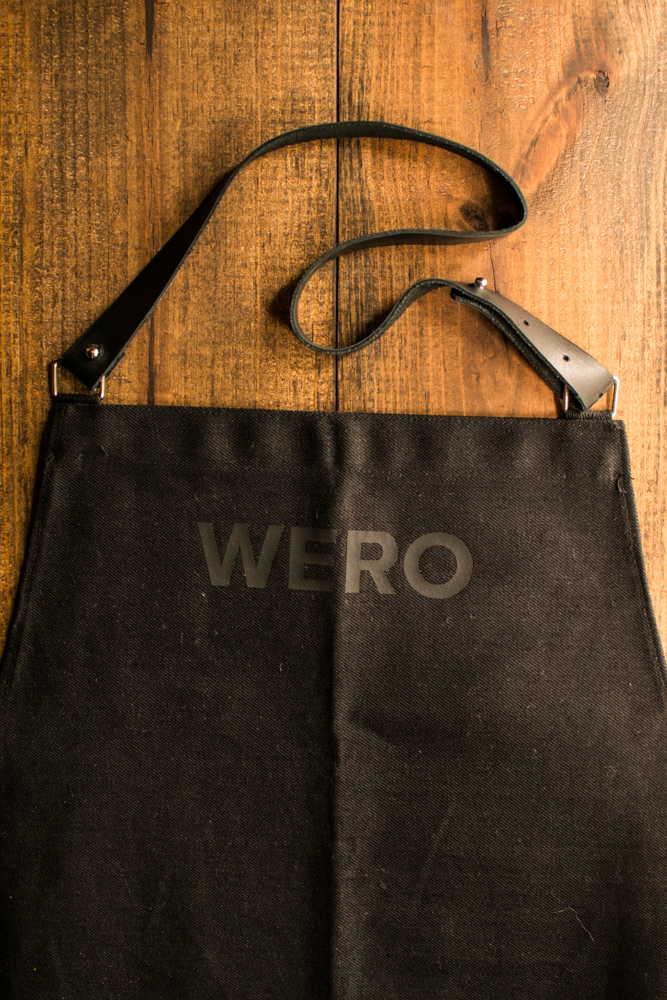


Damián hand crafts all kinds of leather goods, ranging from wallets and passport covers to aprons and totes. At the moment his work is only available in Mexico. See more from Damián on Instagram @damian.labarrere and his newly launched account labarrère for his handmade leather goods.
"There are two men inside the artist, the poet and the craftsman. One is born a poet. One becomes a craftsman."
Photos by Damián Labarrère. Zócalo, CDMX
Damián Labarrère
Damián is something of a Renaissance man. Multitalented, multilingual, well read and traveled, a calm demeanor, and full of surprises. Walking through the streets of Mexico City, he knew the history of the buildings and who they belonged to, why this kind of tree is found in this neighborhood and how it got here, the stories behind the peoples and foods of Mexico. Our walk to the the corner stand for gorditas was a walk through time and culture. Classically trained in the Mexican culinary tradition, Damián is well acquainted with fine dining and the "alta cocina."And yet the self titled "Ta-Connoisseur" loves to eat on the street. Tacos, tlacoyos, empanadas, tamales, quesadillas, birria, aguas frescas, the variety of food found on Mexico City streets is exciting and essentially limitless. He stretches his arms out towards the bountiful streets as we pass by cart after cart of food, "Éste es México, amigo!" This is Mexico.
"Eating on the street is one of the greatest pleasures we have in this life," he comments as we walk past dozens of street venders selling everything from fresh fried potato chips with chile and hot sauce, to tacos, huaraches, gorditas, hot cakes, esquites and everything you can imagine. The sheer amount of food available at any given time, wherever you may be, is one of the most striking things about the city. Stuck in traffic? Venders wade through the cars carrying trays of neatly packed clear plastic containers filled with fruit or cakes and other snacks. Taking the metro? Cooks and venders occupy the spaces between connecting lines, filling the hallways with the smell of baking bread and pop corn. Bus stops and street corners are teaming with complex systems of tents and carts, large comals and hot plates. The sharp sizzle of meat on the grill and the gentle thud of the tortilla press surround you as cooks call out specials in the form of the ubiquitous question "¿Qué le damos?" "What can we give you?" In a city that has some 28 million inhabitants, having access to food everywhere at all hours just works. "You have everything here," I say in awe as we pass el Palacio de Bellas Artes in between taco stops. "I know, dude," he laughs. "That's why I'm not leaving."
Ricos Tacos Guisados "Las Aguilas", CDMX, México
Here in Texas, what passes for Mexican food is often unrecognizable to Mexicans. Tex-Mex has it's place in the culinary world, don't get me wrong, but please take the word "authentic" out of your neon sign. As Damián showed me the different types of food found throughout the city he explained that even in Mexico a lot of what is thought of as traditional Mexican cuisine has it's roots in other countries. "Mexico is the best country to live in," he says convincingly. "But we don't even know what we have here, or where it comes from. We think that chorizo is Mexican, but it's Spanish. Real Mexican cuisine is indigenous, everything else is fusion." And there's nothing wrong with fusion, fusion is delicious, but we should know what we're eating and why. When you appreciate the history, you appreciate the food more. That's one of the beautiful things about Damián's view of Mexico City. He talks about the city as one in love. He knows its past, is aware of its many flaws, and yet he loves it anyway. The city can be difficult and frustrating, but he sees it as beautiful and fascinating, a never ending maze meant to be explored and cherished. When Damián eats on the street, it's not haphazardly. It's not because he couldn't find a decent restaurante to eat at, or due to poor planning or timing, it's because he really loves it. He sees the time and effort and tradition in street food, the elegance of the flavors that are nearly impossible to replicate indoors, and the dignity and transcendent delight of eating with your hands while sitting on a crowded street corner.
Tacos campechanos con chorizo verde
I asked Damián to sum up Mexican food in a single paragraph, and he did so beautifully. It's best heard in Spanish, but I will do my best to translate.
"Es como una fiesta en la boca, llena de sabores, colores, texturas; pasas de lo sublime a lo emocionante y de lo triste a lo feliz en un solo bocado."
-Damián Labarrère
Translated: "It's like a party in your mouth, packed with flavors and colors and textures; you go from the sublime to the exciting and from sad to happy in a single bite." I couldn't agree with you more, buddy.
Keep your eye out for more from Damián on the blog in the near future, as well as more posts from Mexico City.
¡Buen provecho!







